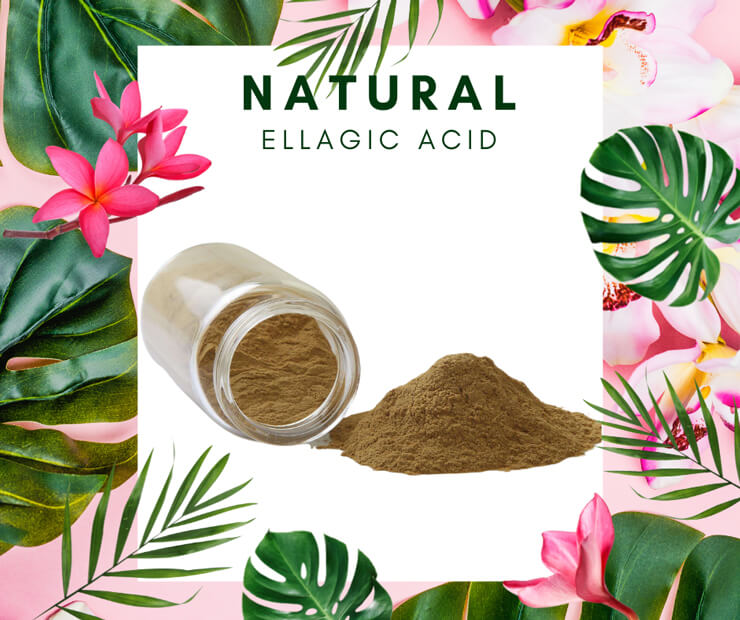In addition to being a valuable antioxidant, ellagic acid has some other beneficial properties, Such as anticancer, anti-inflammatory, and antipathogen. Let’s find out what it is and where it is.
What is it, and where is it located?
Ellagic acid is a phenolic compound—A chemical compound formed by an OH hydroxyl group and an aromatic ring.
Despite its not complex structure, ellagic acid possesses remarkable beneficial properties, especially in the context of serious pathologies such as tumors.
Ellagic acid, like other phenols, interacts with the metabolic processes that lead to the formation of malignant cells, inhibiting them.
Ellagic acid: what are its effects?
Many studies show that it can decrease the symptoms of metabolic diseases such as dyslipidemia, insulin resistance, type 2 diabetes, and fatty liver. Despite numerous studies, the mechanism of action of this nutraceutical is still unclear, and the reason is due to the complexity of ellagic acid metabolism, which depends on various factors, including:
- the food source and the quantity of ellagic acid present in the form of ellagitannins (the relationship between ellagic acid and ellagitannins is essential)
- the existence of other phytochemicals in that specific food
- the extent of absorption in the stomach and small intestine (ellagitannins, unlike ellagic acid, cannot be absorbed in the belly)
- the interaction with the intestinal bacterial flora: depending on the type of intestinal bacterial flora, the bioavailability of ellagic acid changes
- the state of health of the guest (i.e., our state of health).
For this reason, it is necessary to have an overview of all these factors when evaluating the potential beneficial role of foods containing ellagic acid on chronic obesity-mediated diseases.
Ellagic Acid in Food
Scientists have proven that ellagic acid has potent antioxidant, hemostatic, anti-inflammatory, and other beneficial activities and successfully fights cancer cells. Among the natural sources, the best known are raspberries, strawberries, and blackberries. But in nature, there are other foods high in this powerful phenolic compound: some exotic fruits, nuts, and even the so-called liver mushroom (Fistulina hepatica).
Forest strawberry
Common strawberries or wild strawberries (Fragaria vesca) are one of the best sources, almost ten times more in this berry than in raspberries. Wild strawberry leaf tea can also provide your body with this beneficial phenolic compound.
Raspberry
Many of the beneficial properties of raspberries are due precisely to their high concentration. Rarely is a product able to surpass it in this indicator. Moreover, almost 90% of the valuable compound is found in tiny seeds of berries.
Raspberries have more than two times more ellagic acid than garden strawberries, almost three times more than walnuts, and five times more than pecans. Cutting-edge research has shown that a daily intake of just 150g of red raspberries can slow the growth of abnormal colon cells in humans and prevent the development of human papillomavirus (HPV) in cells.
Cloudberry
Like raspberries and blackberries, cloudberries (Rubus chamaemorus) belong to the genus Rubus in the pink family. Unsurprisingly, it also boasts an impressive. The beautiful orange cloudberries are found wild in swamps and floodplains in Scandinavia, northern Canada, and Alaska.
Cranberries
Treating urinary tract infections is the most well-known health benefit of cranberries. However, scientists have proven other medicinal qualities of cranberry extract. For example, it inhibits the growth of prostate, colon, breast, and oral cancer cells. Unsurprisingly, cranberries have a wide variety of phenolic compounds.
Pomegranate
Compared to strawberries and blackberries, the content of free ellagic acid in pomegranates leaves much to be desired. But they have many derivatives, such as ellagitannins. Once in the body, they form molecules of the coveted acid.
Walnuts
Another natural source of ellagic acid is found among the nuts. The content of this phenolic acid in walnuts is comparable to that in garden strawberries. They are also rich in omega-3 fatty acids, which is especially important for people who do not eat meat or fish.
Pecan
Pecans belong to the same Juglandaceae family as walnuts. It also contains but in much smaller quantities. An interesting fact: in other family members, such as pistachios, hazelnuts, Brazil nuts, macadamia, and almonds, scientists have not been able to identify the presence of this polyphenol.
Liver fungus
And finally, the most unexpected product contains. It is a red-brown liver mushroom (Fistulina Hepatica) or common liverwort. In some parts of the world, it is known as the “bull’s tongue” or “fleshy mushroom” mushroom. Previously, it was used as a substitute for meat products. The liver mushroom grows on oaks and chestnuts in the UK but can be found in Europe, North America, and Australia.








